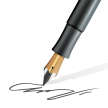The Best Math Activities for Preschoolers
Here, we'll look at some of the most simple and entertaining ways to help young children learn math at home.

If you are the parent or carer of a preschooler, there is no need to wait until kindergarten to begin teaching your child about math. Math can be taught to children as young as five years old. Toddlers can learn to count, and preschoolers can do even more through study material for preschool. Early math instruction will prepare children for their academic careers.
Children who are exposed to math concepts at home perform better in school, according to the National Association for the Education of Young Children. Here, we'll look at some of the most simple and entertaining ways to help young children learn math at home.
Say Goodbye to Boring Worksheets
When children start school, many of their math-related activities revolve around worksheets and memorization, but there are some other enjoyable ways to help your children learn math. Abstract math concepts that can be incorporated into hands-on activities are especially appealing to preschoolers. Preschool-aged children can learn math by playing games that involve learning patterns, sorting objects based on different characteristics, and counting objects. Math worksheets and math problems are certainly useful for older children, but preschoolers are easily distracted and are still learning their numbers, so hands-on activities are preferable.
Learning Patterns
Patterns are one of the simplest ways for preschoolers and toddlers to reinforce basic math concepts. Make patterns with educational tools like blocks, crayons, and even plastic or magnetic letters.
The most fundamental type of pattern activity, for example, involves ABAB patterns—for example, a repetition of green, yellow, green, yellow or circle, triangle, circle, triangle. Games that require children to identify this simple pattern are a fun way to teach them about order and pattern recognition. Using everyday items such as clothing is another enjoyable way to teach children about patterns. If a child is wearing a striped shirt, point out that it has one red, one blue, and one white stripe, and show how the pattern repeats itself. Inquire with your child about what they believe will happen next in the sequence, and help reinforce this activity on a daily basis. See if your child can spot the pattern and explain it to you. You can also instruct your child to make a pattern with any of the above-mentioned toys.
Number Order
Another informal way to teach preschoolers math is to put things in order. Children can be taught to put things in order using simple objects such as balls or balloons, and ordering activities also help with counting. In the balloon example, for example, a parent can label several balloons 1 through 10 and have children assist in arranging the balloons in order based on what they know from learning to count. The parent can then remove a few balloons and ask the children which ones they believe should go where. Inquire with the child about what is wrong with the sequence and what is missing. As children become more adept at identifying patterns and number order, try changing things up and coming up with more complex questions to ask. Challenging questions will encourage children to think critically, which is a necessary skill not only for kindergarten, but also for childhood and adulthood.
Classification Activities
Classifying is a method of grouping or sorting similar items that is ideal for young children. Items can be sorted by attributes such as size or colour; this is a great activity for children who are used to playing with toys such as crayons or building blocks. This can also be an opportunity to teach preschoolers about shapes and colours with the help of preschool lesson planner. For example, you could ask your child to identify and separate all of the triangles in a set of toys. The sorted shapes can be further subdivided by classifying them by colour or size. Children can be taught to distinguish between characteristics such as soft versus hard, shiny versus dull, and rough versus smooth when it comes to everyday items.
To take classification a step further, assist your child in creating a graph. Count each item in each group after grouping a collection of items. Then, on the bottom, make a bar graph by listing the groups of objects (for example, triangle blocks, square blocks, and circle blocks) and the number of each object on the side. This is a step beyond simple counting or grouping, but it helps children connect a group of items—for example, four triangle blocks—to a visual representation of the amount.
Get Started Early and Make It Fun
Parents and carers can reinforce key math concepts at home before their children enter the classroom, giving them an advantage as they enter school. Use the activities highlighted here to make math learning fun and engaging, and encourage your child to apply mathematical concepts in everyday situations. The benefits of a solid math foundation cannot be overstated, so it's critical to always look for new ways to challenge your child while keeping them engaged.
About the Creator
Amit Kumar
Full-time thinker & part-time writer...






Comments
There are no comments for this story
Be the first to respond and start the conversation.